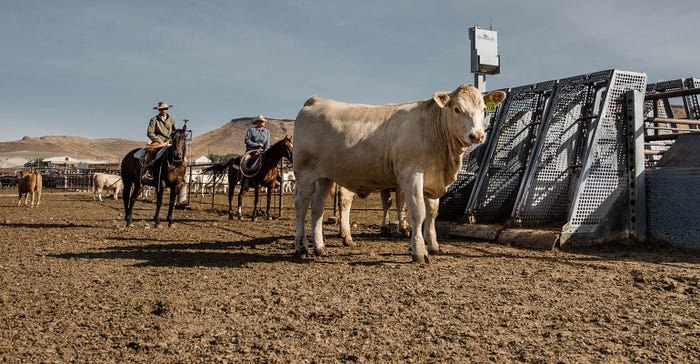12 things to know about feed efficiency to improve your herd
One of the greatest impacts you can make on your herd is improving feed efficiency.
October 15, 2019

Sponsored Content
Creating a plan to impact feed efficiency can help you produce more with less, positively impact your bottom line and reduce greenhouse gas (GHG) emissions. Before you make your next breeding decision, here are 12 things you need to know about feed efficiency to optimize your operation.
Sources:
1 Residual Feed Intake (Net Feed Efficiency) in Beef Cattle. (2006, July). Retrieved January 3, 2019, from https://www1.agric.gov.ab.ca/$department/deptdocs.nsf/all/agdex10861/$file/420_11-1.pdf?OpenElement
2 Study Clarifies U.S. Beef's Resource Use and Greenhouse Gas Emissions . (n.d.). Retrieved from https://www.ars.usda.gov/news-events/news/research-news/2019/study-clarifies-us-beefs-resource-use-and-greenhouse-gas-emissions/
3Weaber, B. (2012). Using Genetics to Get More Efficient.
4Koch, R. M., Swiger, L. A., Chambers, D., & Gregory, K. E. (1963). Efficiency of Feed Use in Beef Cattle. Journal of Animal Science, 22(2), 486–494. doi: 10.2527/jas1963.222486x
5Basarab, J. A., Price, M. A., Aalhus, J. L., Okine, E. K., Snelling, W. M., & Lyle, K. L. (2003). Residual feed intake and body composition in young growing cattle. Canadian Journal of Animal Science, 83(2), 189–204. doi: 10.4141/a02-065
6Faulkner, D. B. (2016). The relationship of RFI and voluntary forage intake and cow survival under range conditions.
About the Author(s)
You May Also Like


.png?width=300&auto=webp&quality=80&disable=upscale)
